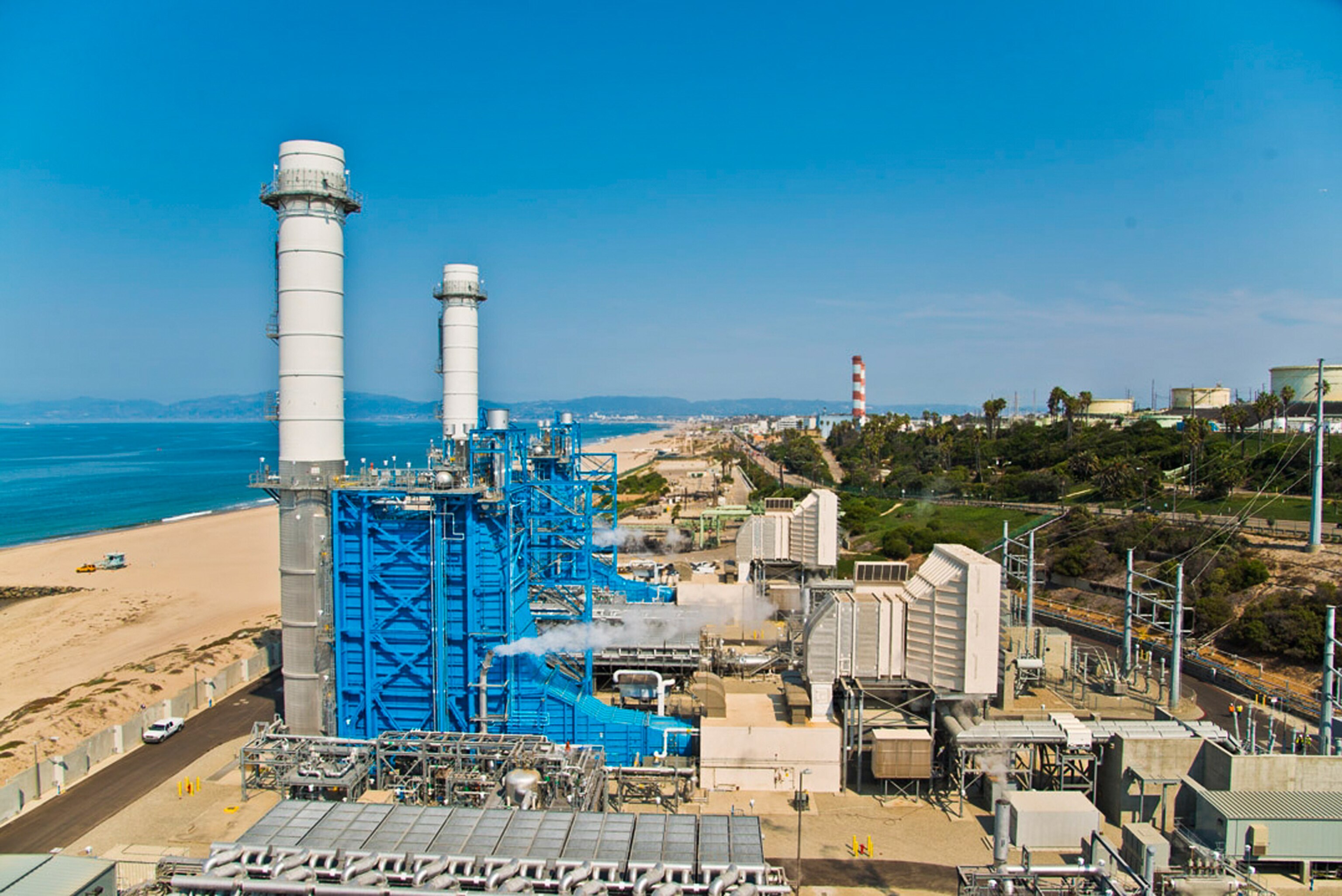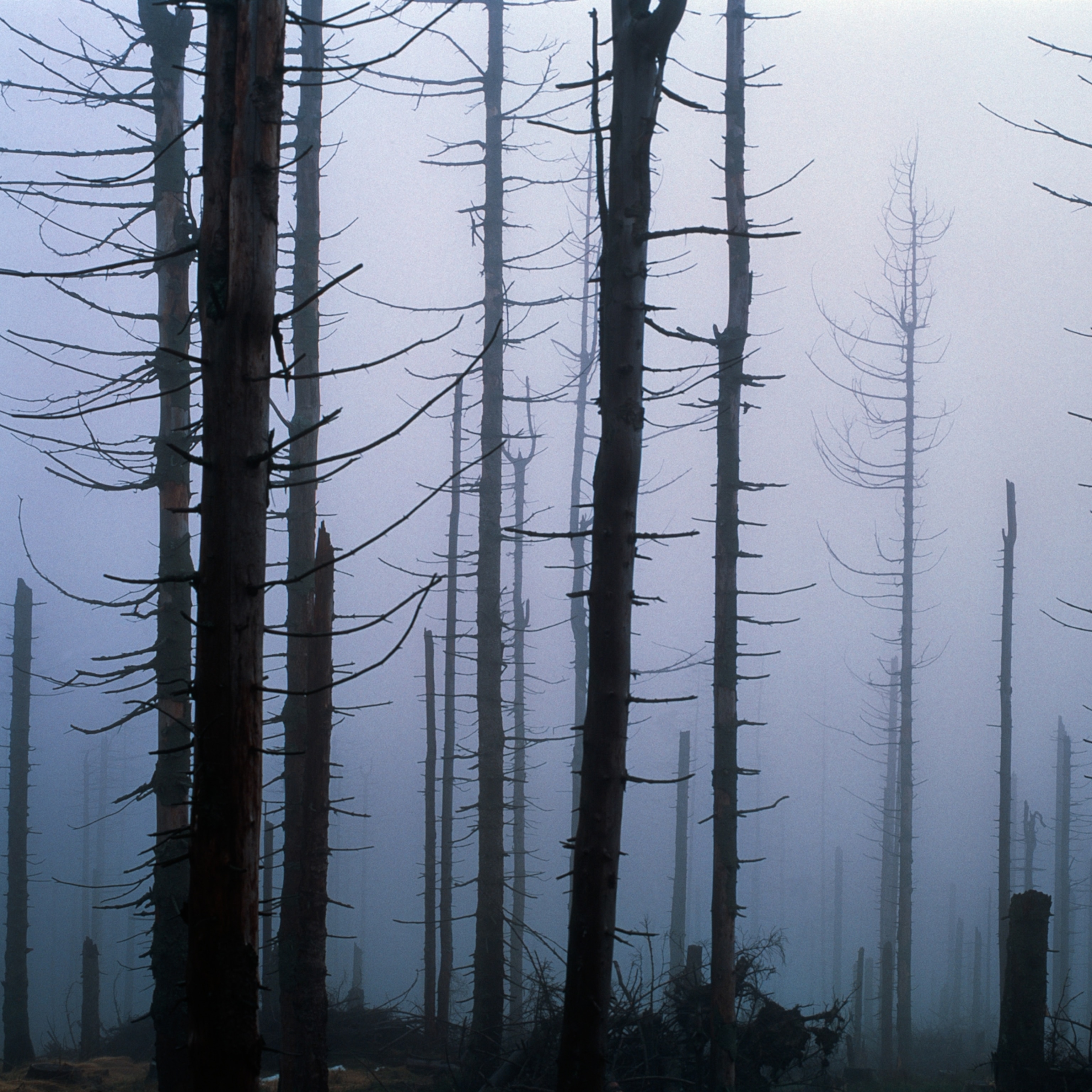
New “Flexible” Power Plants Sway to Keep Up with Renewables
As the use of renewable power on the electric grid ramps up, utilities are turning to technology that makes it easier for natural gas to smooth out the bumps in supply.
Shifting rapidly with the weather, the supply of renewable power can be quite changeable. Most power plants, however, are anything but. Unable to ramp up or down quickly and efficiently, conventional facilities lack the ability to capitalize on a growing influx of wind and solar power to the grid.
Now the technology behind power plants is shifting in response. In California, two new "flex" plants have been built to swoop in and fill the gap with natural gas when renewable resources fall short of demand. One of the plants, the modernized El Segundo Energy Center, opened in September near Los Angeles. The project, which is operated by NRG Energy and uses technology from Siemens, is only the second of its kind in commercial operation nationwide; the first opened last year in Lodi, near Stockton. (See related quiz: "What You Don't Know About Electricity.")
Employing innovations that make the most of combined-cycle technology, in which exhaust heat captured from the burning of natural gas drives a steam turbine, El Segundo's two units can each ramp up to 150 megawatts within 10 minutes and reach a maximum output of 275 megawatts apiece in less than an hour. In contrast, old gas-fired steam boilers still in use at the site take up to 12 hours to warm up, and NRG typically fires them up in the evening to be ready for the next day's power needs.
The new units are helping NRG replace less efficient steam boilers at El Segundo after nearly four decades of operation. Using roughly 30 percent less natural gas per megawatt than the old units it replaced, the system can generate enough electricity for more than 400,000 homes.
Tweaking the Tried and True
As renewable sources of energy like wind and solar begin to make up a larger portion of the power supply, providers are being challenged to ensure that electricity is always available when the wind doesn't gust as powerfully as expected or cloud cover crimps solar production. New or updated plants that can start, stop, or throttle up and down quickly and efficiently—all without breaking down or coughing up excess emissions—might hold one of the keys to accommodating these fluctuating renewables, says Debra Lew, a senior engineer for the National Renewable Energy Laboratory whose research focuses on integrating wind and solar into power systems. "This is what you're going to need in a high wind and solar future," she said. (See related blog post: "A Promising Outlook for Solar Energy Forecasting.")
At the same time, this type of power plant is not an entirely new class of technology that would require utilities to step far outside their comfort zones, notes Steven Minnihan, senior research analyst for the market research firm Lux Research. "Rather, Siemens has made noteworthy improvements on the tried-and-true combined-cycle gas turbine," Minnihan said. "They blend the familiarity and ease of conventional natural gas with some of the flexibility that an energy storage system can offer."
The system does not respond to fluctuating needs as quickly as emerging energy storage technologies, he said, which can capture wind energy generated at night, for example, and make it available as needed when demand picks up during the day. But "Siemens has familiarity on its side," Minnihan said. (See related story: "Too Much Wind? Save It in Underground Volcanic Rock Reservoirs.")
Siemens is not alone in promoting new gas turbines: Alstom, Mitsubishi and General Electric (GE) have all rolled out new generation systems in recent years with an emphasis on flexibility. All of them feature upgrades that go beyond the efficiencies of combined-cycle technology: By adjusting internal controls, improving specific components, and reworking architecture, manufacturers are aiming to provide fast-start turbines that can adjust output quickly without sacrificing performance.
"In the past, there was always a compromise between having highly efficient gas turbine combined-cycle plants, or very flexible gas turbine power plants," said James Donohue, senior marketing manager with GE Power & Water. "We really think that with this technology, you don't have to make that choice anymore."
The technology also addresses concerns that conventional plants' efficiency could be degraded by renewables, erasing the benefits of moving away from fossil fuel. "There had been some myths that had said emissions actually got worse because of cycling impact," said NREL's Lew, referring to the impact of ramping generators up and down to smooth out fluctuations in wind and solar. (See related story: "High Voltage DC Breakthrough Could Boost Renewable Energy.")
Her research with NREL suggests this is not the case in the West—the emissions avoided by harnessing solar and wind instead of burning fossil fuels more than make up for the efficiency lost by running a conventional plant at less than full throttle. But it remains true that utilities must cycle their plants more frequently to accommodate high levels of wind and solar energy, and that this results in some additional maintenance and operations costs.
Rising Intermittency, Changing Needs
Pressure to build a system where renewables and fossil fuels can complement one another on the grid is especially strong in California, where an ambitious mandate calls for renewables to make up at least one third of the total power supply by 2020. Similarly, New Jersey, which ranks behind California as one of the nation's top states for solar installations, recently broke ground on an $845 million, 700-megawatt natural gas facility in Woodbridge.
But new power plant designs like these can help to fill gaps well beyond the United States, too. "They represent an easy and cost-effective way to manage rising intermittency globally," said Minnihan. (See related story: "Japan Solar Energy Soars, But Grid Needs to Catch Up.")
GE, which is providing its FlexEfficiency turbines for the New Jersey facility, hoped to debut its technology in Turkey, touting it two years ago as a world first. That project is still caught in financing discussions, but another flex plant in France is moving forward and expected to come online by early 2016, around the same time as the Woodbridge plant.
Donohue said GE has also had orders for its flex turbines in South America, Japan, and Saudi Arabia. "Over the past several years, there's been more and more of a realization of the fact that with the intermittency of renewables, in order to have a reliable and stable grid, you need to have dispatchable power like combined-cycle power plants to make up for that intermittency," he said.
Donohue said GE is still selling plenty of conventional gas turbines as countries such as Algeria and Nigeria catch up technologically. "The largest order that we ever had in our business recently in Algeria was not [flex] technology. It's kind of an old standard machine that ten years ago was the machine in Europe," Donohue said. But as Algeria develops, he said, "I would bet that in five to ten years, they'll move to this FlexEfficiency technology." In other places, like China and Brazil, Donohue said, competition from coal has held back demand for flex gas plants.
Around the world, new power plants will play a key role in the integration of renewables onto the grid, but NREL's Lew pointed out that another important step will be adapting older power plants to meet society's changing needs. "There's a huge existing fleet out there that's still going to be used because it's been paid for or nearly paid for, and there might be some simple things that can be done to make them more flexible."
This story is part of a special series that explores energy issues. For more, visit The Great Energy Challenge.








